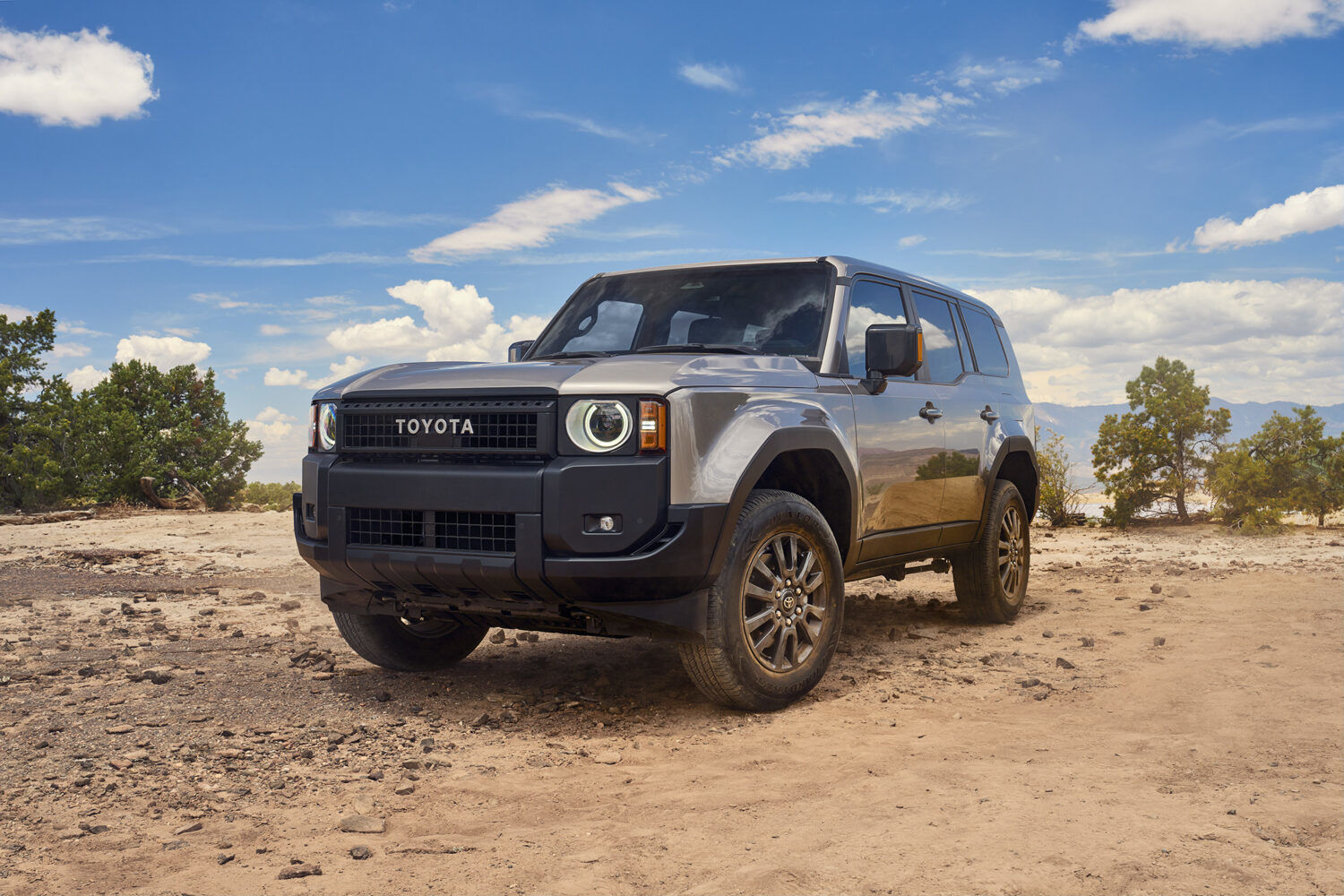
How to Select the Perfect 2025 RAV4 Powertrain for Your Lifestyle
Choosing the right powertrain for your 2025 Toyota RAV4 directly impacts your daily driving experience, from fuel costs to performance...
Read more

For 2025, Toyota is making a subtle yet significant change to its popular plug-in hybrid lineup. The “Prime” designation is being retired in favour of the more straightforward “Plug-in Hybrid” name for both the Prius and RAV4 models.
With this change, Toyota is not only streamlining its model names but also reinforcing its role as a leader in the transition to greener vehicles. The rebranding also aligns with the company’s Beyond Zero initiative, an effort aimed at making a positive impact on the climate. Let’s take a closer look at what this means for the 2025 Prius and RAV4 Plug-in Hybrid models.
A New Name, Same Expertise in Electrification
The decision to replace “Prime” with “Plug-in Hybrid” underscores Toyota’s deep-rooted experience in electrified vehicles, while also simplifying the naming convention for consumers. The addition of “PHEV” badging leaves no ambiguity about these vehicles’ plug-in hybrid electric vehicle (PHEV) capabilities, clearly distinguishing them from traditional hybrids. This small tweak ensures drivers understand that both models offer the flexibility of pure electric driving combined with the reliability of Toyota hybrid systems.
The 2025 Toyota Prius Plug-in Hybrid: A Versatile Powerhouse
The 2025 Prius Plug-in Hybrid is built for drivers who value both efficiency and versatility. Under the hood, its 2.0L gas engine works in concert with a powerful electric motor-generator system to deliver 220 horsepower. Paired with an electronically-controlled continuously variable transmission (CVT) and front-wheel-drive, this combination ensures a smooth and responsive driving experience.
One of the standout features of the Prius Plug-in Hybrid is its impressive electric-only range of up to 72 kilometres. For most daily commutes, this means the car can operate entirely on electricity, drastically reducing fuel consumption and emissions. And when you need more power, the transition to hybrid mode is seamless, ensuring you won’t be left worrying about range anxiety on longer trips. Best of all, the vehicle’s lithium-ion battery can be fully recharged in as little as four hours, making it both practical and convenient for everyday use.
For eco-conscious drivers, the Prius Plug-in Hybrid offers a no-compromise solution, blending fuel efficiency with the benefits of electric driving. Whether you’re zipping through the city or embarking on a road trip, the Prius is equipped to deliver a balanced, sustainable driving experience.
The 2025 Toyota RAV4 Plug-in Hybrid: Where Power Meets Efficiency
For those seeking more power and versatility, the 2025 RAV4 Plug-in Hybrid provides a compelling option. Its 2.5L four-cylinder engine, coupled with high-torque electric motors, generates an impressive 302 horsepower. All models come standard with electronic on-demand all-wheel-drive, ensuring that the RAV4 is ready for all weather conditions and terrains, making it a great choice for both urban and outdoor adventures.
The 2025 RAV4 Plug-in Hybrid truly shines when it comes to range and charging capabilities. With a combined range of up to 979 kilometres on a full tank of gas and a full battery charge, long-distance travel is no problem. For shorter trips, its 68-kilometre pure-electric range means many daily drives can be completed without using a drop of fuel. And with the ability to charge the battery in just 2.5 hours using a 240V outlet, the RAV4 is as convenient as it is efficient.
With its blend of power, efficiency, and flexibility, the RAV4 Plug-in Hybrid offers drivers the best of both worlds. It’s a versatile vehicle designed to handle everything from daily commutes to extended road trips, all while keeping fuel consumption low and emissions even lower.
Toyota’s Broader Commitment to Electrification
Both the Prius and RAV4 Plug-in Hybrids represent just a small part of Toyota’s expansive lineup of electrified vehicles. Toyota offers a wide range of powertrains, from hybrids and plug-in hybrids to battery electric vehicles and hydrogen fuel cell models. This variety ensures that Toyota is meeting the needs of a diverse customer base while actively contributing to the shift toward greener transportation.
Toyota’s legacy of innovation in hybrid technology stretches back over 25 years, beginning with the original Prius. Today, the company continues to lead the industry in developing reliable, practical, and efficient electrified powertrains, as evidenced by the cutting-edge technology featured in the 2025 models.
Conclusion
The 2025 Toyota Prius and RAV4 Plug-in Hybrids embody the perfect balance of performance, sustainability, and practicality. Whether you’re drawn to the versatile efficiency of the Prius or the powerful yet eco-friendly RAV4, these vehicles offer solutions for a wide range of driving needs. As Toyota continues to pave the way towards a more sustainable future, these models stand as prime examples of the company’s dedication to reducing emissions and offering innovative mobility solutions.

How to Select the Perfect 2025 RAV4 Powertrain for Your Lifestyle
Choosing the right powertrain for your 2025 Toyota RAV4 directly impacts your daily driving experience, from fuel costs to performance...
Read more
Is the 2025 Land Cruiser Practical for Daily Driving?
The Toyota Land Cruiser has built its reputation on legendary off-road capability and durability over six decades in Canada. Now returning for...
Read more
2025 Toyota 4Runner vs Sequoia: Capability, Space and Price Comparison
The 2025 Toyota SUV lineup offers two standout options for adventure-seeking drivers. The all-new sixth-generation 4Runner brings fresh design,...
Read more